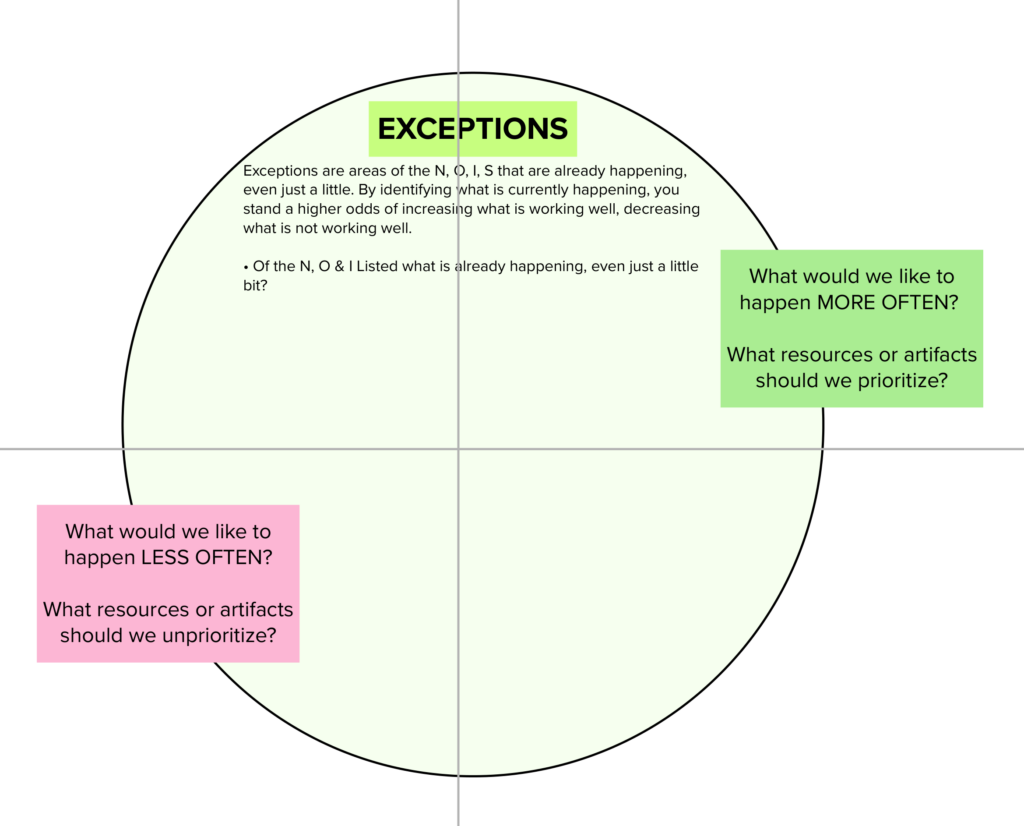In today’s dynamic business environment, traditional models like SWOT analysis often fall short in addressing the complexities of organizational development. That’s why I’ve developed the NOISE analysis, a framework designed to delve deeper into the needs and strengths of a company, paving the way for innovative solutions and sustainable growth.
NOISE, an acronym for Needs, Opportunities, Improvements, Strengths, and Exceptions, is a tool that transcends conventional boundaries, offering a more nuanced approach to organizational analysis.
The Essence of the NOISE analysis
At its core, NOISE analysis revolves around five critical components:
- Strengths: What does your company excel at? Identifying these gives you a solid foundation to build upon.
- Needs: What does your team or company require to succeed? Recognizing these needs is crucial for targeted development.
- Opportunities: What potential avenues exist for future innovation and growth? These can guide your strategic planning.
- Improvements: What short-term enhancements can be made? These often yield immediate benefits.
- Exceptions: Where does your team already exhibit glimpses of the hopeful future, even if only a little bit?
The Power of Exceptions
The concept of exceptions is pivotal within the NOISE analysis framework. Drawing from solution-focused techniques, exceptions are instances where, despite challenges, desired outcomes or hopes are already being achieved to some extent. This aligns closely with the idea of ‘adjacent possibles‘ in complexity thinking. Instead of leaping towards massive breakthroughs, we focus on small, achievable steps using the least energy and resources.
A Practical Approach to Exceptions
Working with a team struggling to grasp exceptions, I guided them through two transformative questions:
What do we want to happen MORE OFTEN?
- Identifying what we’d like to occur more frequently helps us set clear goals and understand their significance.
For the desired frequent events, what resources or artifacts should we prioritize?
- Artifacts here refer to documents, procedures, processes, and physical items that need emphasis to achieve these goals.
What do we want to happen LESS OFTEN?
What resources or artifacts should we unprioritize for the desired less frequent events?
This exercise isn’t just about choosing what to focus on; it’s about understanding the trade-offs and making informed decisions that align with the company’s vision.

The Outcome
Engaging in this exercise fosters psychological-safety, space for interactions that lead to innovation and solutions, and space for teams to discuss exceptions. It’s within these exceptions that true innovation and emergent ideas flourish. By focusing on what should happen more or less often, companies can springboard into new, uncharted territories of growth and development.
The NOISE analysis, particularly exploring exceptions, offers a unique lens through which organizations can view their current landscape. It’s a tool for analysis and transformation, guiding companies in their journey towards excellence.

